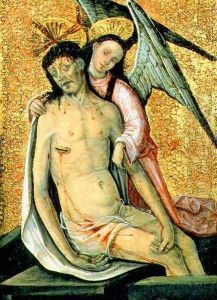the Elder Rodrigo de Osona Paintings
Rodrigo de Osona the Elder was a Spanish painter active during the late 15th century and the early 16th century. He was born around 1440, likely in Valencia, a city that during his lifetime was a significant cultural center in the Crown of Aragon. His exact date of birth is not documented, but his activity as an artist is recorded from the 1460s onwards. He is known to have died around 1518.
Osona the Elder's work is characteristic of the Hispano-Flemish style, which combined the Gothic tradition with the early Renaissance influences that were spreading across Europe at the time, particularly from Flanders. This style is noted for its detailed representation, richness in color, and complex iconography, often with a strong religious component.
Much of Osona the Elder's oeuvre consists of religious panel paintings, altarpieces, and frescoes for churches. He worked extensively for the Valencian church and nobility, creating works that were notable for their devotional intensity and their incorporation of both local and Flemish artistic elements. His paintings often featured elongated figures, meticulous attention to detail, and vivid use of color. He also showed a particular skill in rendering textures and materials such as brocades and metals, evidencing the influence of Netherlandish oil painting techniques.
Rodrigo de Osona the Elder had a workshop in Valencia, which became one of the most important in the city. His sons, Rodrigo de Osona the Younger and Francisco de Osona, were also painters and continued the family tradition, sometimes collaborating with their father on large commissions. Today, Osona the Elder's works can be found in various museums and collections, primarily in Spain, and they continue to be studied for their contribution to the development of the Renaissance in the Iberian Peninsula.
